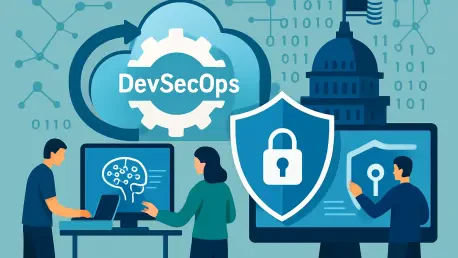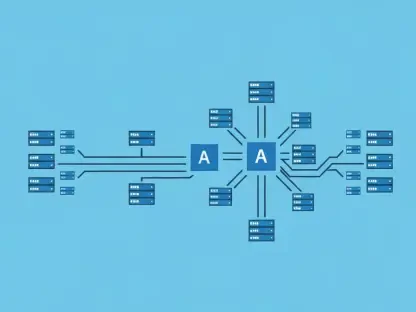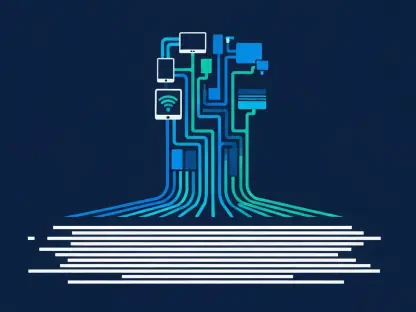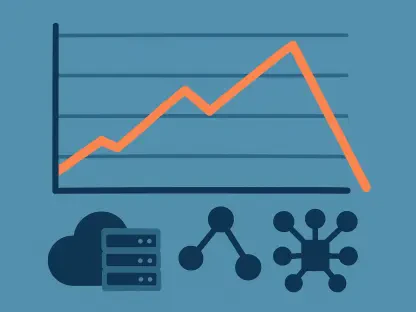In an era where technology evolves at a breakneck pace, federal agencies face the daunting task of integrating cutting-edge tools like artificial intelligence into their operations while safeguarding public trust and ensuring robust security. The challenge lies in balancing rapid innovation with accountability, a concern that has prompted a strategic shift toward DevSecOps—a methodology that weaves development, security, and operations into a cohesive framework. This approach is gaining traction across government departments as a means to modernize services and address the complexities of AI adoption. From enhancing user experiences to managing data risks, DevSecOps offers a structured path to meet public expectations. At a recent conference in Reston, Virginia, leaders from various federal entities shared how this methodology is reshaping their digital transformation efforts, highlighting a unified commitment to secure, user-focused solutions.
Modernizing Services Through User-Centric Design
Federal agencies are increasingly prioritizing user experience as a cornerstone of their digital transformation, leveraging DevSecOps to ensure that technology serves real human needs. At the Department of Veterans Affairs, efforts to redesign the mobile app exemplify this focus, with an emphasis on accessibility for veterans. Leaders have stressed that technology must address genuine pain points, ensuring that empathy remains at the heart of service delivery. By integrating security and operations from the design phase, the agency can roll out updates that are both intuitive and protected against vulnerabilities. This approach reflects a broader understanding that user-centric design is not just about functionality but also about building trust through reliable and responsive systems. The result is a platform that veterans can depend on for critical support, demonstrating how DevSecOps enables agencies to align innovation with public needs.
Another striking example comes from the Department of Labor, where a revamped homepage has streamlined access to services like career transition support and workplace complaint filings. By adopting DevSecOps principles, the department launched a beta site with automated tools and preconfigured security settings, ensuring that user interactions are both seamless and safe. Collaboration with information security officers during the planning stages allowed for a proactive approach to risk management, embedding safeguards directly into the development process. This initiative underscores the value of simultaneous work streams over traditional, sequential methods, enabling faster delivery of user-focused solutions. The emphasis on intuitive design paired with robust security highlights how federal entities are redefining public service in the digital age, ensuring that technology remains a tool for empowerment rather than frustration.
Ensuring Security in AI Implementation
As artificial intelligence becomes a cornerstone of government operations, federal agencies are turning to DevSecOps to manage the associated risks and maintain public confidence in data handling. At the State Department, officials have emphasized the importance of understanding data flows within AI systems to prevent misuse or unintended consequences. This vigilance is supported by DevSecOps practices that promote continuous oversight and dialogue around responsible technology use. The focus is on creating a framework where innovation does not outpace accountability, ensuring that sensitive information is protected at every stage. Public trust hinges on such meticulous attention to detail, as any misstep could undermine confidence in government systems. This cautious approach illustrates how DevSecOps serves as a vital tool for navigating the complexities of AI in a way that prioritizes safety over speed.
Similarly, the Department of Energy draws parallels between nuclear safety protocols and AI deployment, using DevSecOps to instill discipline and awareness in technology adoption. Practices such as initiating a “work pause” to review systems during uncertainties ensure that potential errors are caught early. Leaders advocate for embracing technological disruption while remaining vigilant about risks, a balance that DevSecOps facilitates through structured processes. This methodical integration of security into development cycles allows for innovation without compromising on critical safeguards. The commitment to rigorous oversight reflects a shared understanding among agencies that AI must be deployed responsibly, with mechanisms in place to address challenges as they arise. By embedding such caution into their operations, federal entities aim to harness AI’s potential while protecting the public interest.
Fostering Collaboration and Cultural Shift
DevSecOps is not merely a technical framework but a profound cultural shift that demands collaboration and adaptability across federal agencies. This methodology encourages breaking down silos, fostering partnerships between development, security, and operations teams to create cohesive solutions. At the Department of Labor, initiatives with private sector vendors and White House programs are enhancing understanding of emerging technologies like agentic AI, which could transform training and apprenticeship programs. Such collaborations highlight the importance of shared expertise in addressing modern challenges, ensuring that government services evolve in step with technological advancements. By prioritizing joint efforts, agencies can tackle complex issues more effectively, aligning their strategies with broader public goals.
Beyond partnerships, DevSecOps drives a fundamental change in operational mindset, urging agencies to integrate security from the earliest stages of development. This shift away from traditional, sequential workflows to concurrent processes enables faster, more secure outcomes, as seen in various departmental redesigns. The emphasis on foresight and continuous improvement ensures that systems remain agile in the face of evolving threats and user needs. Federal leaders recognize that modernizing government operations requires investment in both technology and human capital, cultivating a workforce equipped to handle digital transformation. This cultural evolution, underpinned by DevSecOps, positions agencies to deliver services that are not only efficient but also deeply trusted by the public, setting a new standard for accountability in the digital era.
Building a Trustworthy Future
Reflecting on the strides made, federal agencies demonstrate a resolute commitment to balancing innovation with accountability through DevSecOps. The focus on enhancing user experiences, as seen in redesigned platforms at the Departments of Veterans Affairs and Labor, shows how technology can be both accessible and secure. Rigorous safety measures in AI deployment at the State Department and Department of Energy underscore a dedication to protecting data and public trust. Collaborative efforts and cultural shifts further solidify this approach, ensuring that government operations adapt to modern demands. Looking ahead, the path forward involves scaling these practices across more departments, investing in training to deepen DevSecOps expertise, and fostering even stronger public-private partnerships. By continuing to prioritize user needs and security, federal entities can build resilient systems that anticipate future challenges, ensuring that technology remains a force for public good.









